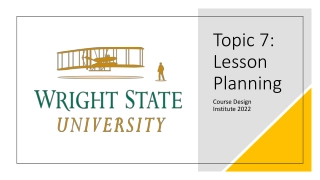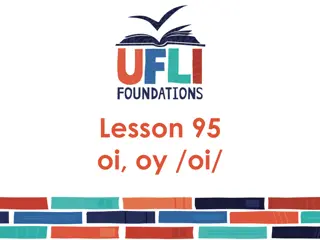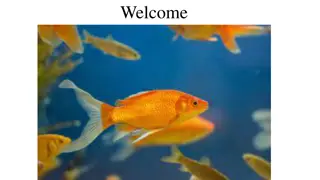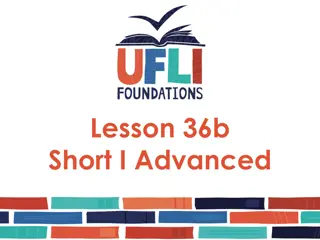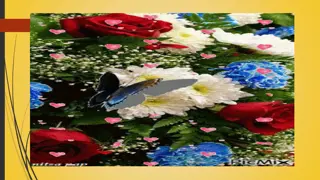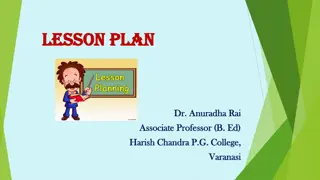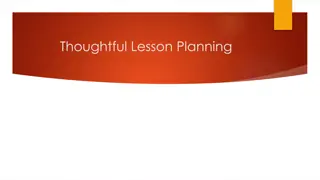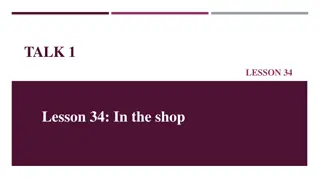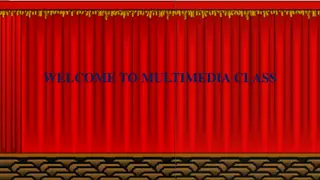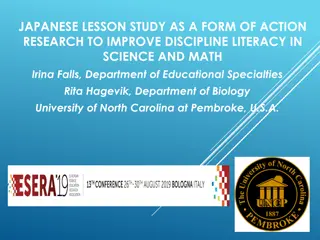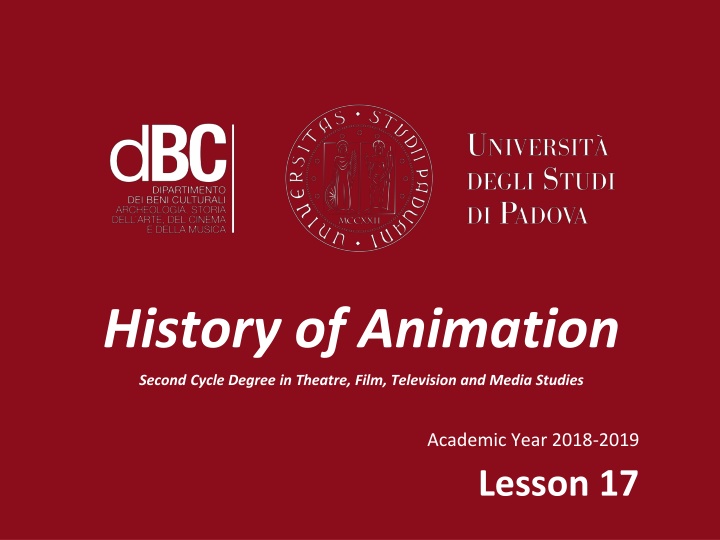
Great Britain's Animation Pioneers: Halas, Batchelor, and Dunning
Explore the animation history in Great Britain, focusing on iconic figures like John Halas, Joy Batchelor, and George Dunning. Learn about their contributions, from the groundbreaking "Animal Farm" to the innovative use of computer-aided animations. Discover the evolution of British animation through their work and legacy in this comprehensive overview.
Download Presentation

Please find below an Image/Link to download the presentation.
The content on the website is provided AS IS for your information and personal use only. It may not be sold, licensed, or shared on other websites without obtaining consent from the author. If you encounter any issues during the download, it is possible that the publisher has removed the file from their server.
You are allowed to download the files provided on this website for personal or commercial use, subject to the condition that they are used lawfully. All files are the property of their respective owners.
The content on the website is provided AS IS for your information and personal use only. It may not be sold, licensed, or shared on other websites without obtaining consent from the author.
E N D
Presentation Transcript
History of Animation Second Cycle Degree in Theatre, Film, Television and Media Studies Academic Year 2018-2019 Lesson 17
Animation in Europe 3 Great Britain and France
Animation in Europe 3 Great Britain Relevant authors and studios of Great Britain 1940: Halas & Batchelor
Animation in Europe 3 Great Britain John Halas (1912-1995, J nos Hal sz) was born in Budapest. He joined British animator Joy Batchelor (1914-1991), whom he later married.
Animation in Europe 3 Great Britain After a series of appreciated propaganda shorts during World War II, they directed Great Britain s first full-length animated film: Animal Farm. It was released in 1954, five years after George Orwell s death. The American producer Louis de Rochemont wanted it to be an anti-Stalinist film. In the end, it had a more universal appeal: a film about freedom.
Animation in Europe 3 Great Britain Animal Farm (John Halas, Joy Batchelor, 1954)
Animation in Europe 3 Great Britain The worldwide appreciation towards Animal Farm allowed Halas and Batchelor to develop a rich and diversified production of animation: from entertainment series to educationals and art films (Halas was a disciple of the Bauhaus and believed in a rational approach to arts). In the late 1960s, they were among the first to produce animations aided by computers.
Animation in Europe 3 Great Britain Dilemma (John Halas, Joy Batchelor, 1981)
Animation in Europe 3 Great Britain Relevant authors and studios of Great Britain George Dunning
Animation in Europe 3 Great Britain Dunning (1920-1979) was born in Canada. He moved to London and founded a production company, mostly devoted to ads. However, he had the chance to perfect a unique pictorial style. He gained worldwide fame thanks to Yellow Submarine (1968). It represents the commercial side of the protestgeneration ; in fact, Dunning was more interested in the creation of a sensorial experience, than in politics or social issues.
Animation in Europe 3 Great Britain Yellow Submarine (George Dunning, 1968)
Animation in Europe 3 Great Britain Damon the Mower (George Dunning, 1972)
Animation in Europe 3 Great Britain The Tempest (George Dunning, 1979; fragment)
Animation in Europe 3 Great Britain Relevant authors and studios of Great Britain Richard Williams
Animation in Europe 3 Great Britain Williams was born in Canada, just like Dunning (with whom he collaborated). His animations had a stylized and simple style, at first. However, during the 60s he organized lessons and seminars by master animators from Disney and WB. His style changed radically. His approach is firmly rooted in life drawings and fine arts; in order to render movements, he prefers slowness over fastness.
Animation in Europe 3 Great Britain A lecture on man (Richard Williams, 1962)
Animation in Europe 3 Great Britain A Christmas Carol (Richard Williams, 1971)
Animation in Europe 3 Great Britain Relevant authors and studios of Great Britain 1972: Aardman Animation
Animation in Europe 3 Great Britain Aardman was founded in Bristol by Peter Lord and David Sproxton. Later (1985) they were joined by Nick Park, who soon won an Academy Award (Creature Comforts, 1991). The trademark of Aardman was claymation based on live recordings of conversation. Aardman gained worldwide reputation thanks to its Wallace & Gromit series: four shorts, a few specials and a full-length claymation film which have been collectively awarded three Oscars.
Animation in Europe 3 Great Britain Creature Comforts (Nick Park, 1989)
Animation in Europe 3 Great Britain The Wrong Trousers (Nick Park, 1993)
Animation in Europe 3 Great Britain The Pirates! In an Adventure with Scientists! (Peter Lord, 2012)
Animation in Europe 3 Great Britain
Animation in Europe 3 France Relevant authors and studios of France Paul Grimault (1905-1994)
Animation in Europe 3 France In 1936, he founded with producer Andr Sarrut his own studio, Les Gemeaux. A series of well-received short film (Les Passagers de la Grande Ourse, 1941; Le marchand de notes, 1942; L epouvantail, 1943) consolidated the reputation of the studio. In 1947, he planned a full-length feature: La berg re et le ramoneur. The screenplay was by Grimault s long time friend, the poet Jacques Pr vert. However, the production stalled and Sarrut urged Grimault to release an unfinished film in 1950. Grimault was so disappointed at this, that he stopped working in animation.
Animation in Europe 3 France Finally, the film was finished in 1980, and released with the new title Le roi et l oiseau. Prevert reworked the original script. It is now considered one of the most influential animated films of all times.
Animation in Europe 3 France Le roi et l oiseau(Paul Grimault, 1980)
Animation in Europe 3 France Relevant authors and studios of France Ren Laloux (1929-2004)
Animation in Europe 3 France Laloux started his career as a painter. He got a job in a psychiatric institution where he began experimenting animation with the interns. in His animation often feature surrealistic settings and themes related with the powers of the human mind.
Animation in Europe 3 France After a first short in collaboration with Grimault (Les dents du singe, 1960), Laloux joined the post- surrealist painter Roland Topor. Their combined efforts led to the production of two shorts and a feature film: La plan te sauvage (1973). Laloux directed two more films: Les ma tres du temps (1982, with Moebius) and Gandahar (1987, with Philippe Caza).
Animation in Europe 3 France La plan te sauvage (Ren Laloux, 1973)
Animation in Europe 3 France Relevant authors and studios of France Jean-Fran ois Laguionie (1939)
Animation in Europe 3 France Paul Grimault produced Laguionie s first three short films. He studied at a drama school in Paris, and this is well mirrored by his visual and narrative style. I like false realism [ ]. I like everything which is false. I like trompe-l oeil, false perspectives and everything against which one could break one s face, but which also displays a sincere intention to represent reality .
Animation in Europe 3 France Laguioine most famous short film is La Travers e de l'Atlantique la rame (1978). He directed four feature films: Gwen, le livre de sable (1985); Le Ch teau des singes (1999); L' le de Black M r (2003); Le Tableau (2011).
Animation in Europe 3 France Le Tableau (Jean-Fran ois Laguionie, 2011)
Animation in Europe 3 France Louise en hiver (Jean-Fran ois Laguionie, 2016)
Animation in Europe 3 France Relevant authors and studios of France Michel Ocelot (1943)
Animation in Europe 3 France Ocelot s childhood in Guinea left a strong mark on his artistic inspiration (the three films of the Kirikou series). He masters a wide range of animation techniques, from silohuette and cut-out animation to CGI, while retaining a personal style. He practised his personal take on Lotte Reininger s silohuette animation while collaborating with Laguionie (the short film Les Trois Inventeurs was shot at Laguionie s home).
Animation in Europe 3 France Princes et Princesses (Michel Ocelot, 2000)
Animation in Europe 3 France Relevant authors and studios of France Sylvain Chomet (1963)
Animation in Europe 3 France After a short film and three feature films (one of which being a live-action one, Attila Marcel, 2013), Chomet affirmed himself as one of the most influential contemporary directors of animation. His pantomimic, highly visual kind of narration draws inspiration from silent films and Franch mimes like Jacques Tati; his idiosincratic graphic style is strongly rooted in comics and caricature.
Animation in Europe 3 France Les Triplettes de Belleville (Sylvain Chomet, 2003)
Suggested readings Giannalberto Bendazzi, Animation. A World History. 3 voll., Waltham, Massachusetts: Focal Press, 2015, Vol. II, pp. 41-46 (up to and including- the section Grimault and the Stories from the Front ); pp. 164-168 from and including- the section Young Aardman & Co. up to and including- the section RichardWilliams ); pp. 172-177 (from and including- the section France: From Craftmanship to Ambition up to and including- the section Jean-Fran oise Laguionie ); Vol. III, pp. 85-87 (from and including- the section Aardman up to and including- the section NickPark ); pp. 105-106 (only the section MichelOcelot ).

